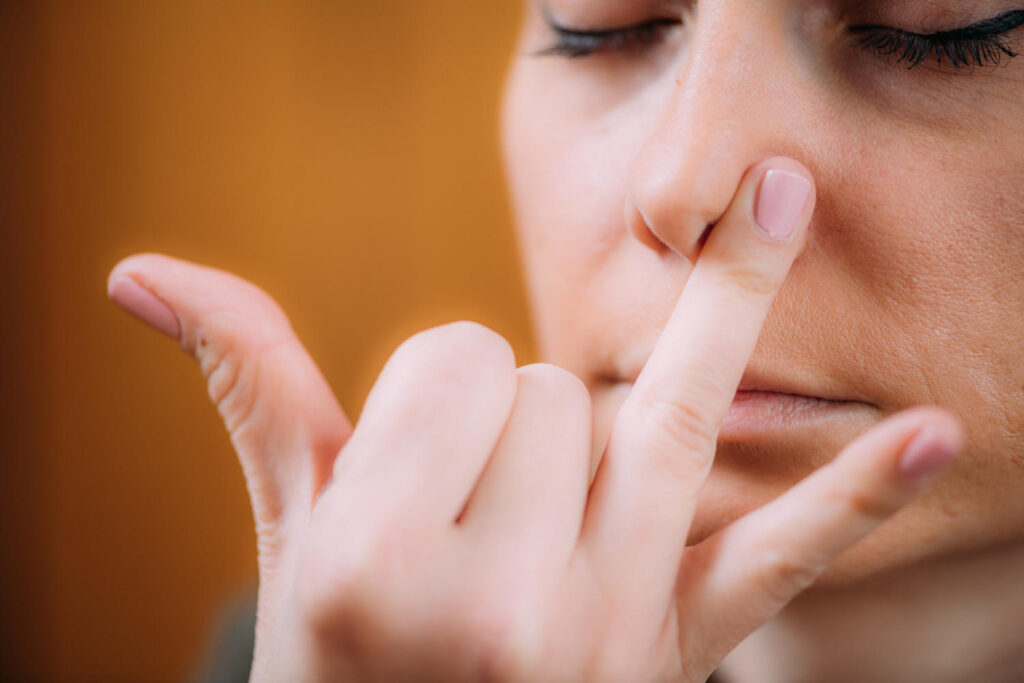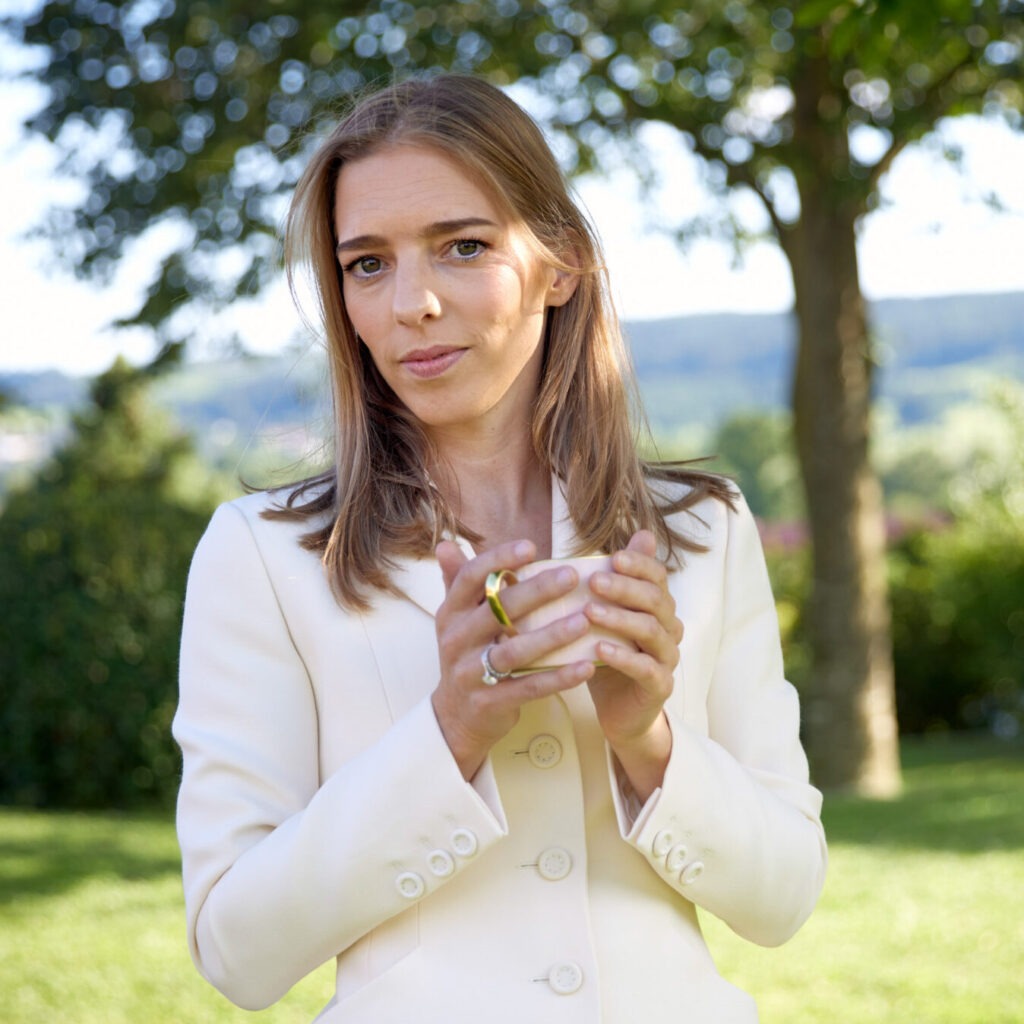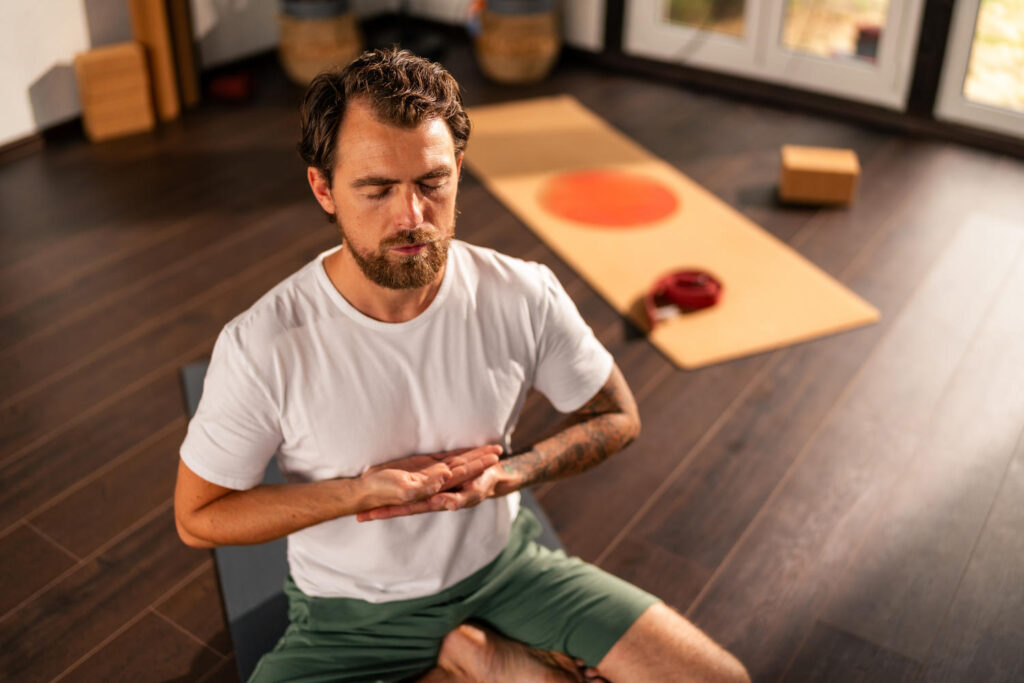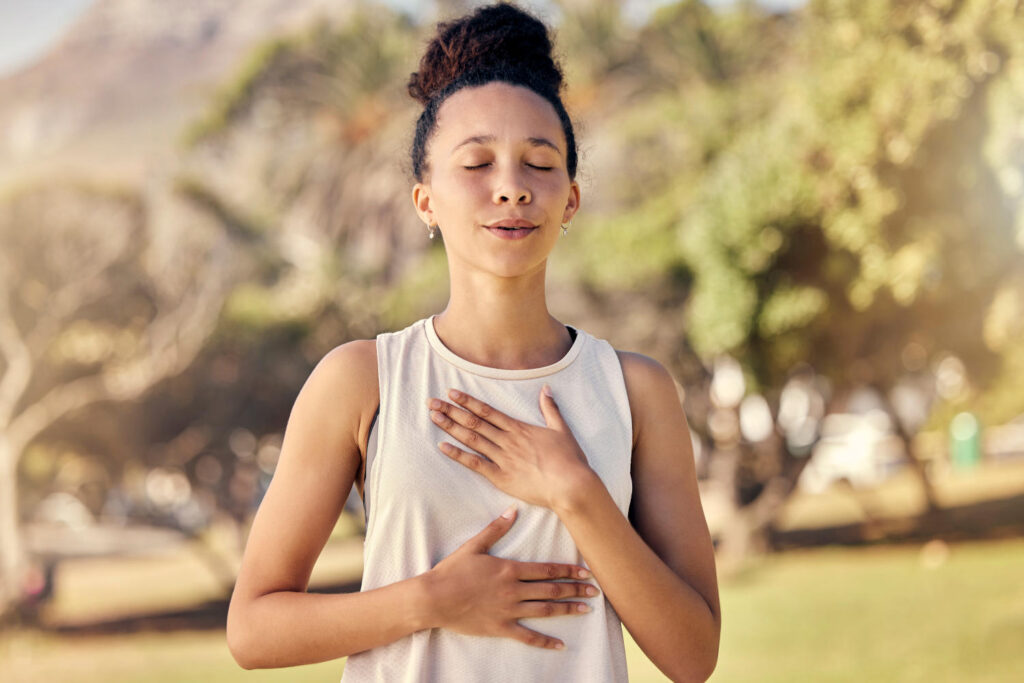One breath – barely noticed, yet full of power. Pranayama opens the door to a state in which stillness, energy and presence merge. No effort, no prerequisites – just you and your breath. Once you start to breathe consciously, many things begin to change. Noticeably. Lastingly. Now.
The most important facts in brief:
- Holistic approach: Pranayama combines breath, energy and awareness and has a balancing effect on body and mind.
- Easy to get started: You can achieve noticeable effects with basic techniques such as diaphragmatic breathing, alternate breathing and Ujjayi breathing.
- Suitable for everyday use: Just a few minutes of daily practice can sustainably improve your well-being.
- Ayurvedic integration: In Ayurveda, pranayama is used specifically to harmonize the doshas and promote health.
Contents
- What does pranayama mean?
- Benefits of Pranayama
- Which exercises are suitable for getting started?
- Pranayama in everyday life
- Pranayama breathing and Ayurveda
- Develop holistic well-being with pranayama
- Frequently asked questions
What does pranayama mean?
Pranayama comes from Sanskrit and is made up of two words: “prana” means life energy or life force, while “ayama” stands for control or expansion. In the yogic tradition, pranayama therefore refers to the conscious control of life energy through targeted breathing techniques.
The importance of pranayama goes far beyond simple breathing exercises. In yoga, the breath is seen as the connection between body and mind. By controlling the breath, we can have a direct influence on our nervous system and our state of consciousness.
Pranayama is the fourth stage in the eight-limbed path of yoga according to Patanjali and prepares the practitioner for meditation. In classical yoga, pranayama is practiced after the physical exercises (asanas). This deliberate sequence is deliberately chosen: Tensions in the body are released first, then the breath can flow more freely.
Benefits of Pranayama
Regular pranayama practice does far more than just provide short-term relaxation – it has a profound effect on a physical, mental and energetic level. In addition to calming the nervous system and reducing stress, studies show a variety of other positive effects:
- Stress reduction & emotional balance: Conscious breathing regulates the nervous system, lowers stress hormones such as cortisol and promotes inner calm – ideal for exhaustion, overstimulation and anxiety.
- Improves heart rate variability (HRV): A stable breathing rhythm strengthens the autonomic nervous system and supports heart health and resilience in everyday life.
- More focus & mental clarity: Controlled breathing increases concentration, improves mental stamina and helps to reduce mental restlessness.
- Strengthening the lungs & immune system: Pranayama techniques promote oxygen uptake, regulate breathing patterns and can positively influence immune processes.
- Sleep quality & regeneration: Breathing exercises with prolonged exhalation calm the body before falling asleep and support a restful sleep.
Yoga breathing exercises
Discover more breathing techniques and their effects in our article on yoga breathing exercises:
Which exercises are suitable for getting started?
For beginners, we recommend simple pranayama techniques that are easy to learn and yet have a noticeable effect. Always start in a comfortable, upright sitting position and take time to observe your natural breathing rhythm before you begin the exercises.
In advanced variants, breath holding also plays a role: intermittent hypoxia, achieved through breath holding techniques such as Bahaya Pranayama, can provide numerous benefits, including increased hemoglobin levels, improved memory and a strengthened immune response.
Pranayama yoga connects body and mind through conscious breath control. The three basic techniques for getting started provide a good foundation for further practice. All exercises should first be practiced under guidance to ensure correct execution.
| Technology | Execution | Main effect |
|---|---|---|
| Diaphragmatic breathing | Deep abdominal breathing with a focus on diaphragmatic movement | Basis of all techniques, maximizes oxygen uptake |
| Nadi Shodhana | Alternate breathing through left and right nostril | Harmonizes the nervous system, promotes mental clarity |
| Ujjayi | Breathing with slightly constricted pharynx | increases focus, generates inner warmth |

Simple diaphragmatic breathing
Diaphragmatic breathing forms the basis of all pranayama techniques. Place one hand on your stomach and one on your chest. Breathe in deeply through your nose so that your stomach rises first and then your chest. As you exhale, lower your chest and abdomen again.
This breathing technique fully activates the diaphragm and maximizes oxygen uptake. Diaphragmatic breathing can reduce oxidative stress – an important factor for cell health and regeneration.
Alternate breathing (Nadi Shodhana)
For this balancing technique, breathe alternately through the left and right nostril. Close the right nostril with your right thumb and breathe in through the left. Then close the left nostril with your ring finger, open the right one and breathe out.
Nadi Shodhana harmonizes the two hemispheres of the brain and the nervous system. This technique is particularly suitable for promoting mental clarity and reducing stress. It is traditionally recommended to cleanse the energy channels (nadis) and create a balance between the energies.
Ujjayi-breath
The Ujjayi breath, also known as the “ocean breath”, is produced by a slight constriction of the throat. Breathe in and out through the nose while constricting the throat to create a gentle murmur, similar to the sound of ocean waves.
This technique warms the body from the inside and calms the mind at the same time. The audible stream of breath serves as an anchor for attention and helps to stay in the present moment. Ujjayi is often used during yoga practice to deepen concentration.
Bhramari can also be practiced: Bhramari Pranayama increases the production of nitric oxide in the nasal cavities, which can help reduce sinusitis and improve oxygenation.
Pranayama in everyday life
Integrating pranayama into everyday life doesn’t have to be complicated. Just a few minutes of daily practice can have a noticeable effect. The key lies in the regularity and not the duration of the exercises.
Start your day with five minutes of conscious breathing before you get out of bed. This short practice can have a positive effect on your entire day. Also use short breaks in your working day to take three deep breaths. This can help to clear your mind and recharge your batteries. Especially in stressful situations, conscious breathing can help you keep a cool head.
Practical everyday tips for pranayama breathing:
- Set up a reminder: Set a reminder tone on your smartphone to encourage you to breathe consciously several times a day.
- Connect with everyday life: Link pranayama to daily activities, e.g. before eating or while waiting for the bus.
- Use the 4-7-8 method: For acute stress: inhale for 4 seconds, hold for 7 seconds, exhale for 8 seconds.

“More and more often, I come across people who have forgotten how to breathe – at least deeply and through their nose. Yet breathing is crucial to life: we can survive three weeks without food, three days without water, but not three minutes without oxygen. Despite this, we hardly pay any attention to our breathing. If you breathe shallowly all the time, you unconsciously activate ‘fight or flight’ mode. Only deep diaphragmatic breathing through the nose activates the parasympathetic system – the one responsible for regeneration, digestion and real recovery.
My tip: try to breathe exclusively through your nose while running. It’s unusual at first, but over time a new body sensation opens up – meditative, powerful, clear.”
Christina Drexler, Holistic Ayurveda Expert & Managing Director of the Ayurveda Resort Mandira
Pranayama breathing and Ayurveda
Pranayama plays a special role in the Ayurvedic health system. Targeted breath control harmonizes the doshas – the three basic constitutional types Vata, Pitta and Kapha – and thus supports inner balance at all levels. Depending on the Dosha composition, different techniques are recommended to specifically compensate for imbalances.
Vata types are creative, but often nervous, restless and sensitive to cold. Gentle techniques such as Nadi Shodhana or Chandra Bhedana help to calm the mind. Bhramari – humming breathing – has a particularly beneficial effect on inner tension. Important: even breathing, long exhalations and a calm atmosphere for the exercise.
Pitta people are powerful but prone to irritability and overheating. Cooling breathing exercises such as Sheetali and Sitkari help to regulate excess heat. Nadi Shodhana can also be useful without holding the breath. Heating techniques such as Bhastrika tend to be counterproductive when Pitta is high.
Kapha types tend to be sluggish, listless and accumulate mucus. Activating techniques such as Kapalabhati or Bhastrika get energy moving, promote blood circulation and clear the airways. The following applies to Kapha: practise in the morning, breathe dynamically, but always with a clean technique.

Develop holistic well-being with pranayama
Pranayama is more than just a breathing technique – it is a path to inner balance, supported by thousands of years of knowledge and modern research. At the Ayurveda Resort Mandira, we combine these two worlds to create an effective concept for sustainable regeneration. Our experienced yoga and Ayurveda experts design your personal pranayama practice individually – tailored to your constitution, your energy profile and your life situation. Experience how conscious breathing opens up new spaces for vitality, clarity and calm.
Now take a deep breath – and start again
Discover the healing power of Pranayama as part of our holistic Ayurveda treatments.
Frequently asked questions
What is the difference between Breathwork and Pranayama?
The difference between Breathwork and Pranayama lies in their origin, objective and structure: Pranayama is a traditional, systematically structured breathing practice from yoga, with clearly defined techniques and a spiritual background. Breathwork, on the other hand, is a modern generic term for various breathing methods for emotional or physical self-regulation – often without a yogic background.
How does fire breathing work?
Fire breathing, also known as Kapalabhati, works like this: The breath is actively and forcefully expelled through the nose, while the inhalation is passive. With each exhalation, the abdominal wall is consciously pulled inwards. The technique is practiced rhythmically while sitting and has a stimulating, expectorant and energizing effect.
Is pranayama meditation?
No, pranayama is not meditation, but a preparatory breathing practice in yoga that prepares the body and mind for meditation. Targeted breath control calms the nervous system, sharpens concentration and stabilizes the inner state – ideal conditions for the meditative contemplation that follows. In yoga, pranayama traditionally follows asanas and precedes dhyana.
Cover image: © Beaunitta V W/peopleimages.com – stock.adobe.com; Image 1: © Microgen – stock.adobe.com; Image 2: © DusanJelicic – stock.adobe.com



